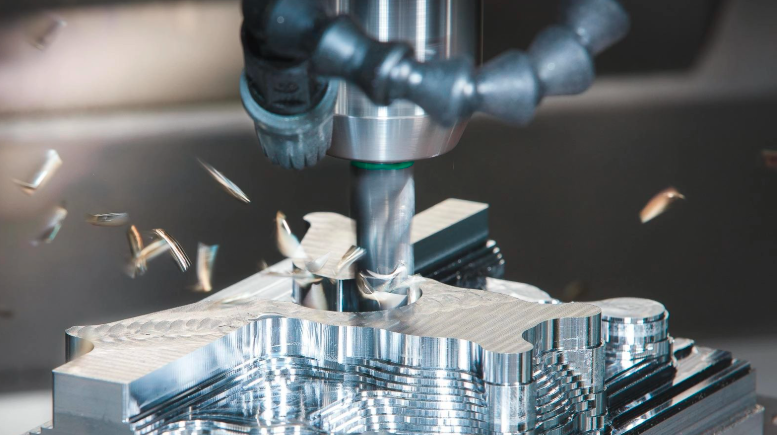The Role of CNC Machining in the Oil and Gas Industry

The oil and gas industry operates in some of the harshest environments on the planet, requiring precision-engineered components that can withstand extreme pressures, temperatures, and corrosive conditions. Oil and gas CNC machining plays a vital role in manufacturing these components with high accuracy and consistency. This advanced machining process enables the production of essential parts used in drilling, extraction, transportation, and refining operations.
This article explores the significance of CNC machining in the oil and gas sector, the materials used, key components produced, and the challenges faced in manufacturing.
Understanding CNC Machining for Oil and Gas
CNC (Computer Numerical Control) machining is a precise and automated manufacturing process where computer-controlled machines cut, shape, and drill materials into complex parts. Unlike traditional manual machining, CNC technology ensures higher accuracy, repeatability, and efficiency, making it ideal for industries that require strict tolerances, such as oil and gas.
Oil and Gas CNC Machiningis essential for producing high-performance components that can endure intense operational conditions. Whether it’s downhole drilling tools, pipeline fittings, or offshore rig parts, CNC machining ensures that each component meets stringent industry standards.
Importance of CNC Machining in Oil and Gas
The oil and gas sector requires robust and reliable components, and CNC machining provides several benefits:
1. Precision and Accuracy
CNC machining eliminates human error, ensuring consistent, high-precision parts. The ability to maintain tight tolerances is crucial for components like valves, pumps, and couplings that must fit perfectly to prevent leaks or failures.
2. High Durability
Oil and gas components are exposed to high pressures, extreme temperatures, and corrosive substances. CNC machining allows for the use of heat-resistant and corrosion-resistant materials that enhance durability and longevity.
3. Cost-Effective Production
Although CNC machining has high initial costs, its efficiency, reduced material waste, and low defect rates make it cost-effective in the long run. Automated operations also minimize labor costs while improving productivity.
4. Customization and Scalability
Oil and gas companies often require customized parts for unique drilling or extraction needs. CNC machining allows for rapid prototyping and scalable production, making it suitable for both small-batch manufacturing and large-scale production runs.
5. Ability to Handle Tough Materials
Many components in the oil and gas industry are made from hard metals like titanium, Inconel, and stainless steel. CNC machines can efficiently process these materials with high-speed cutting and advanced tooling techniques.
Common Materials Used in Oil and Gas CNC Machining
Choosing the right material is crucial for ensuring component performance and longevity in the oil and gas sector. Here are some of the most widely used materials in oil and gas CNC machining:
1. Inconel
- Highly resistant to heat and corrosion
- Ideal for turbines, exhaust systems, and high-pressure valves
2. Stainless Steel
- Excellent strength and corrosion resistance
- Commonly used for pipes, pumps, and structural supports
3. Titanium
- Lightweight yet exceptionally strong
- Suitable for drilling components and offshore applications
4. Carbon Steel
- High tensile strength
- Used in pipeline construction and casing systems
5. Aluminum
- Lightweight and resistant to environmental damage
- Ideal for housings, brackets, and smaller machine parts
Key CNC Machined Components in Oil and Gas
CNC machining is used to manufacture a variety of critical components in the oil and gas industry, including:
1. Drill Bits
CNC machining ensures the production of durable and sharp drill bits capable of penetrating tough rock formations. Precision in manufacturing helps reduce wear and tear, extending the lifespan of these tools.
2. Valves and Fittings
Oil and gas operations require high-precision valves, couplings, and flanges to regulate fluid flow. CNC machining ensures tight tolerances, preventing leaks and pressure losses.
3. Pipeline Components
CNC machining is used to produce custom pipeline connectors, manifolds, reducers, and flanges. These components must meet exacting specifications to ensure seamless transportation of oil and gas.
4. Blowout Preventers (BOPs)
A blowout preventer is a critical safety component in drilling operations. CNC machining ensures that each part of a BOP is precisely manufactured to prevent catastrophic failures.
5. Downhole Tools
Stabilizers, mud motors, and casing shoes are machined with high precision to ensure they function effectively in deep drilling operations.
6. Pump Components
CNC machining is used to manufacture pump impellers, casings, and seals that can withstand extreme pressures and temperatures.
7. Offshore and Subsea Equipment
Many offshore drilling rigs rely on CNC-machined components, including structural supports, housings, and hydraulic fittings, to withstand harsh marine environments.
Read also: What Investors Look for in a Promising Startup
Challenges in Oil and Gas CNC Machining
Despite its advantages, oil and gas CNC machining presents several challenges:
1. Machining Tough Materials
Superalloys like Inconel and titanium are difficult to machine due to their hardness and heat resistance. Advanced tooling and cooling systems are required to maintain efficiency.
2. Strict Industry Regulations
The oil and gas industry follows strict API (American Petroleum Institute) and ISO standards. CNC-machined components must comply with these safety and performance requirements.
3. High Manufacturing Costs
The need for high-precision machinery, specialized cutting tools, and skilled operators increases production costs. However, automation and advanced CNC techniques help reduce long-term expenses.
4. Extreme Environmental Conditions
Components used in subsea and high-pressure drilling environments must withstand corrosion, pressure, and temperature fluctuations, requiring special coatings and treatments.
5. Tight Tolerances
Even a small deviation in part dimensions can lead to operational issues. CNC machining must ensure tolerances within microns to prevent equipment failures.
Future of CNC Machining in Oil and Gas
The oil and gas industry continues to evolve, and advancements in CNC machining are driving innovation. Some emerging trends include:
1. Automation and AI
Automated CNC machines integrated with artificial intelligence can improve precision, reduce defects, and optimize production efficiency. AI-driven monitoring systems can also predict maintenance needs, reducing downtime.
2. Hybrid Manufacturing
The combination of 3D printing and CNC machining is enabling faster prototyping and custom part production, reducing material waste and lead times.
3. Advanced Coatings and Treatments
New surface treatments like plasma nitriding, ceramic coatings, and wear-resistant alloys enhance the durability of CNC-machined components.
4. Sustainable Manufacturing
Many companies are adopting environmentally friendly machining processes that reduce energy consumption and minimize material waste, aligning with global sustainability goals.
Conclusion
CNC machining is a cornerstone of manufacturing in the oil and gas industry, providing high-precision, durable, and reliable components for drilling, extraction, and refining operations. The ability to produce customized, high-performance parts ensures efficiency and safety in some of the most challenging environments.
Despite challenges such as machining tough materials, maintaining tight tolerances, and adhering to strict regulations, advancements in automation, AI, and hybrid manufacturing are shaping the future of oil and gas CNC machining. By leveraging these innovations, companies can enhance productivity, reduce costs, and improve operational efficiency, ensuring long-term success in the industry.





